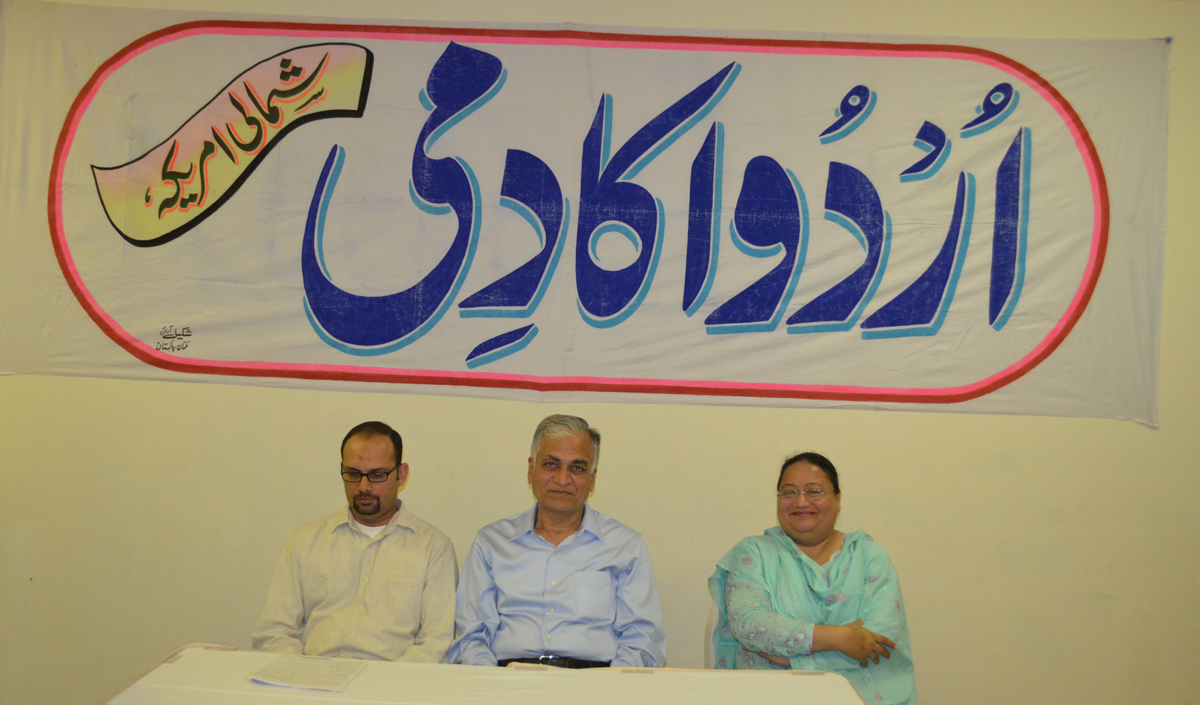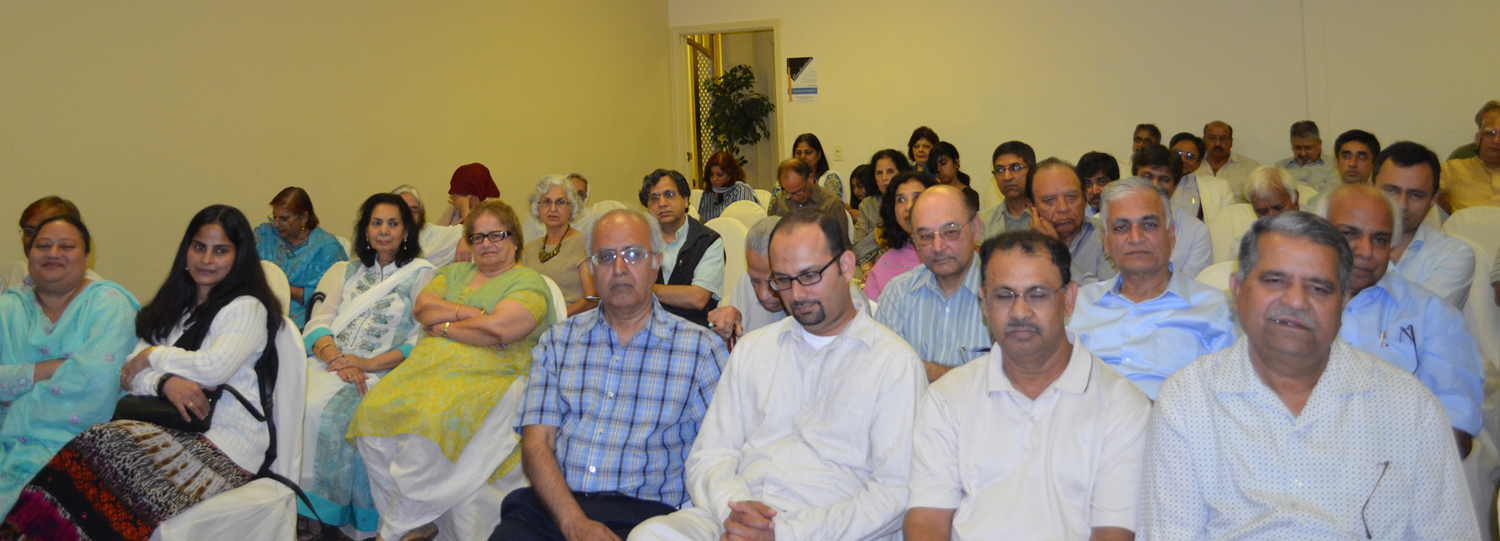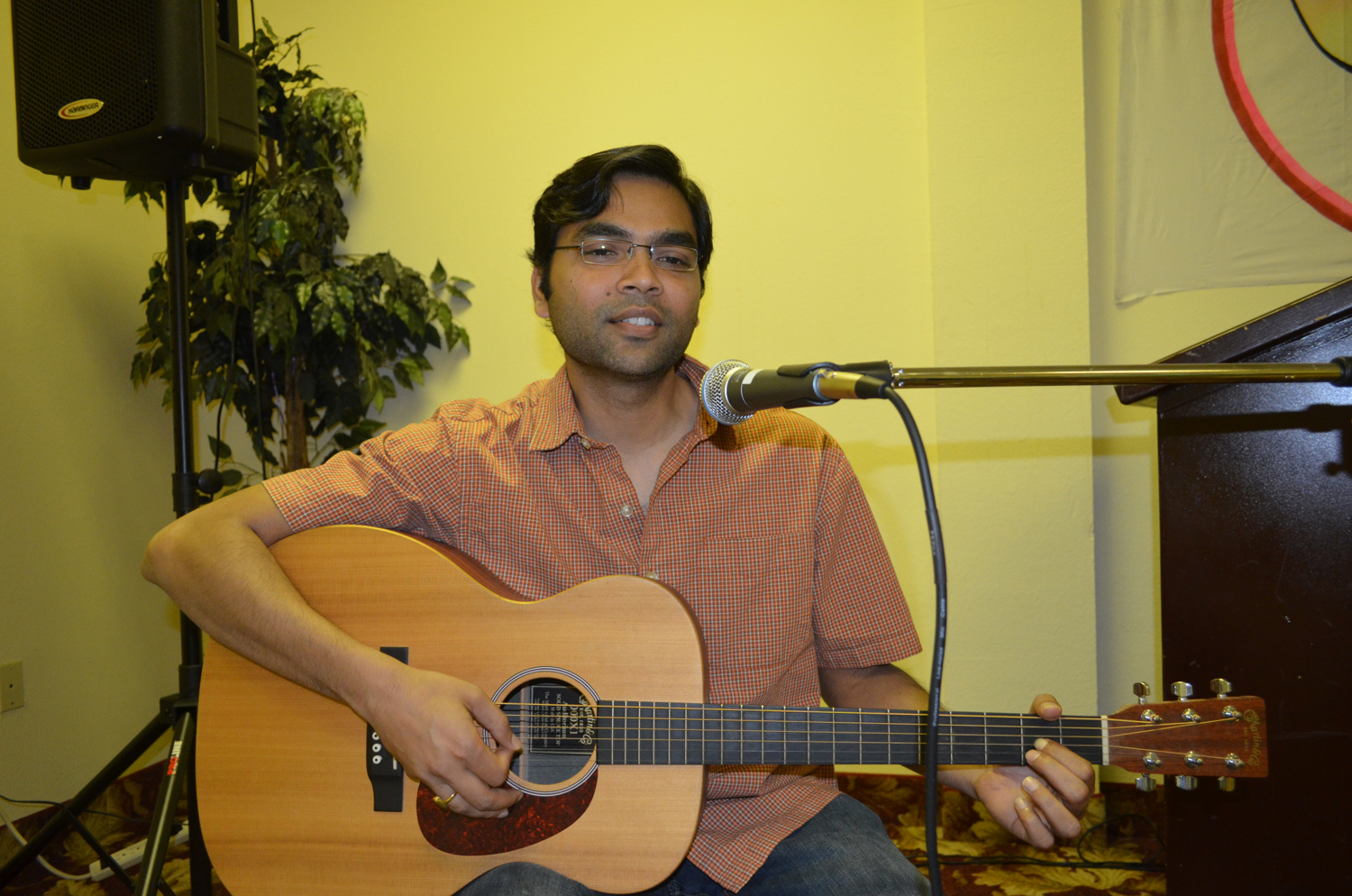|
By Abdus Sattar Ghazali
The Urdu Academy of North America dedicated its June 17, 2012, event to the life and work of two great poets of Urdu, Firaq Gorakhpuri and Raees Amrohvi. The event, held at the Chandni Restaurant, Fremont/Newark, was presided over by poet Humayun Naseer while poetess Prof. Lubna Manzar and poet Ahmar Shahwar were mc of the program. At the outset, poet Arshad Rashid welcomed the audience on behalf of the Urdu Academy.
Ahmar Shahwar was the mc of the first session of the literary event that was dedicated to Firaq Gorakhpuri. Ahmad Shahwar presented a thought provoking maqala on the life and work of this great Urdu poet.
A number of Urdu lovers recited the poetry of Firaq Gorakhpuri, among them were: Shahzad Baseer, Meraj Sultana Ghazali, Hatim Rani, Mukesh Kackar, Abdus Sattar Ghazali, Ishaq Nagpurwala, Mahmood Hassan, Jaafar Shah, Nagesh Awadhani, Prof. Shams and Talat Khan.
Dr. Anshuman Chandra stole the show with his presentation of Firaq Gorakhpuri's ghazals in his melodious voice and guitar.
Firaq Gorakhpuri was born Raghupati Sahay in the year 1896 at Gorakhpur District of Eastern Uttar Pradesh. Born to a family of aristocrats, Firaq had a taste of Urdu poetry at very tender age. He started writing poetry in Urdu at a very young age and developed his own niche in an era that was marked by the likes of Sahir Ludhyanvi, Sir Mohammad Iqbal, Faiz Ahmed Faiz and Kaifi Azmi.
(Pictures shows from left: Ahmar Shahwar, Humayun Naseer and Lubna Manazer.)
He was selected for the Provincial Civil Service (P.C.S.) and the Indian Civil Service (I.C.S.), but he resigned to follow Mahatma Gandhi's Non-cooperation movement, for which he went to jail.
Later, he joined Allahabad University as a lecturer in English literature. It was there that he wrote most of his Urdu poetry, including his magnum opus Gul-e-Naghma which earned him the highest literary award of India, the Jnanpith Award, and also the 1960 Sahitya Akademi Award in Urdu.
During his life, he was given the positions of Research Professor at the University Grants Commission and Producer Emeritus by All India Radio.
As a distinguished poet, Firaq Gorakhpuri was well-versed in all traditional metrical forms such as ghazal, nazm, rubaai and qat'aa. He wrote more than 40,000 couplets. He was a prolific writer, having written more than a dozen volumes of Urdu poetry, a half dozen of Urdu prose, several volumes on literary themes in Hindi, as well as four volumes of English prose on literary and cultural subjects.
After a long illness, he died on March 3, 1982, in New Delhi.
Raees Amrohvi
The second session of the Urdu Academy literary evening was devoted to the life and work of another great poet of Urdu Raees Amrohvi. Prof. Lubna Manzar, mc of the session, presented a well researched maqala on the life and work of this prominent poet.
As usual a number of Urdu enthusiasts recited Raees Amrohvi's poetry, which included: Shahzad Baseer, Mukesh Kackar, Ahmar Shahwar, Meraj Sultana Ghazali, Hatim Rani, Ishaq Nagpurwala, Abdus Sattar Ghazali, Khalid Rana, Talat Khan, Prof. Shams and Nagesh Awadhani.
Talat Khan and Nagesh Awadhani amused the audience with presenting Raees Amrohvi's poetry in their melodious voices.
Raees Amrohvi's real name was Syed Muhammad Mehdi. He was born on September 12, 1914 in Amroha, India, in a notable family of scholars. Almost all the members of his family were poets. He migrated to Pakistan on October 19, 1947 and settled in Karachi.
According to Rauf Parekh, Mirza Rafi Sauda`s contributions to qaseeda and hajv , for instance, enriched the genres in such a way that these genres, usually looked down upon these days, have some respect in the eyes of critics as the technical and linguistic merits of Sauda`s qaseedas and hajvs are immense. Mir Anees and Dabeer took marsia to such a pinnacle of glory that today their marsias make an invaluable part of Urdu`s classical poetry and, one feels, they must be included in any selection of Urdu`s choicest of verses.
Similarly, Iqbal gave a new vigour and a different vision to Urdu ghazal that ensured its survival in the decades to come though before Iqbal ghazal was a genre much criticised for its typical themes, limited imagery and peculiar vocabulary.
But it is very rare that a poet pioneers a genre and makes it such a smashing success that it becomes an integral part of daily newspapers. The poet was Raees Amrohvi and the genre was political qata-nigari or qata-writing. So what is a qata or qita ? Though many Urdu dictionaries validate the pronunciation `qata`, in Arabic it is `qita`. Derived from an Arabic root, `qata` means a piece, a cutting or a segment. Qata was, initially, an intra-connected portion or a detached segment of a ghazal or qaseeda that could as well be read independent of the original work. Later, it developed as an independent genre of Urdu poetry. Some poets began giving a title to it, too, and now Urdu qata is quite different from its Persian and Arabic prototypes.
Raees Amrohvi's qatas were an instant, succinct and extempore reaction towards the events taking place in the country or elsewhere in the world. Whether it was a political issue or a social trend, an economic problem or a new scientific invention, be it a historic event or a natural disaster, whether it concerned education or it was a moral problem, Raees Amrohvi captured its essence in four lines and made it a food-for-thought kind of piece.
Another aspect of Raees Amrohvi`s creative writing was his columns. Aside from his humorous and satirical columns that appeared under the title `Nazre khush guzre` and `Dekhta chala gaya`, his columns on psychology, parapsychology, spirituality and occult sciences were hugely popular. Published in `Aalami Digest` and `Jang`, these columns appealed to a large section of readers who would write him letters and seek his advice or share their views. At the height of the popularity of these columns, the number of letters he received in mail was in hundreds every month.
He also wrote some short stories but more popular was a series of his short stories based on a character, Hakeem Buddhan, written for a digest. Another character of his was `Achche Mirza`, presented through humorous writings. Drama was another domain of Raees Sahib. Raees Sahib penned over 50 books.
(Dr. Anshuman Chandra thrills the audience with his presentation on guitar.)
This multi-faceted personality died when unidentified assailants murdered him on September 22, 1988 at his home. It is commonly believed that Raees Amrohvi had become a victim of religious differences, which is surprising because he did not believe in religious fanaticism and always preached non-violence.
At the end of the program, Khalid Rana, chief coordinator of the Urdu Academy thanked Syed Sarwat, the owner of the Chandni Restaurant for hosting the event on regular basis. He praised Syed Sarwat's dedication to the Urdu language.
See picture on page: 1 2 3 4
|